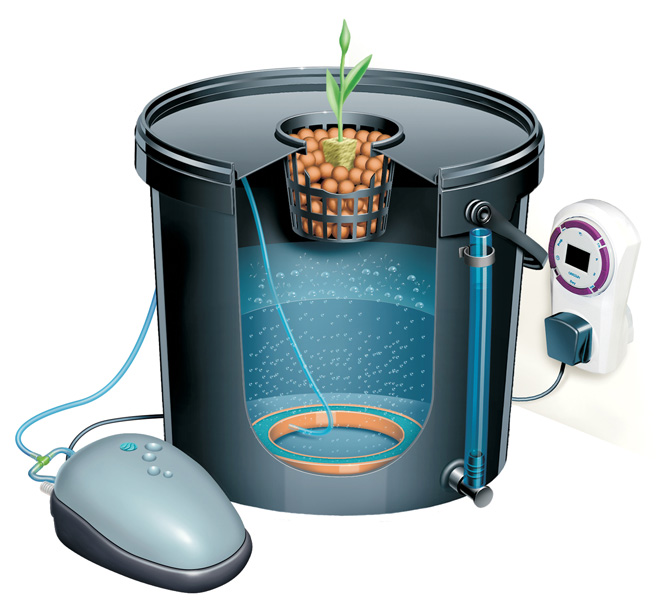
 |
|
Hydroponics - Indoor HorticultureHydroponics - Indoor Horticulture represents an educational, in-depth,
up-to-date,
indoor horticultural growers guide that covers all principles of indoor Hydroponics - Indoor Horticulture examines, explores, dissects and
presents a fully comprehensive step by step growers guide, relating
to all and every aspect of indoor hydroponic horticulture, with complete
chapters on plant biology, propagation, hydroponic systems, nutrients,
oxygen, carbon dioxide enrichment, pH, biological pest control, fungi/disease,
cuttings/clones, pruning/training, breeding, harvesting, equipment,
grow rooms, a full history of hydroponics, and more. |
(Below
follows a one page sample taken from the book)Deep Water Culture
|
reservoir itself. As the bucket can only hold a very limited amount of water - 5 to 10 litres, and the plants are living in this small amount of water, the CF and pH of this water is in a state of constant flux and therefore in need of constant attention. Not only that, but larger plants can deplete 5 litres of water in a single day so you are also in constant danger of the system literally running out of water. To emphasise this a little better, as plants uptake water they do not necessarily uptake nutrients at the same rate and as this occurs, the plants might be drinking lots of water but not eating much food. The result is that in a matter of hours, as the water is depleted, the concentration of the nutrients in the bucket can reach toxic levels. So it is critical to always under feed your plants in this system. With this in mind, the pH will also fluctuate as the water is depleted but the nutrients are not. So, you are advised to keep a constant check on monitoring and maintaining this system. Maintenance of this system also presents a headache because in order to change the water and check the pH and CF, you have to physically remove the lid and the plant from the growing chamber. To lift the lid with a small plant in it is not so much a worry, but to be constantly lifting the lid with a large plant located in it will do damage to the plant and the rootball of the plant. Bear in mind that you will have to do this on at least a daily basis, so the practicality of this technique is very questionable. If you were to maintain several of these buckets in one grow room, then you could be looking at a full-time maintenance job – not really what hydroponics is about! Large plants that are grown in this system will also need extra support due to the fact that the plant is grown in a minimal amount of medium, which will not support heavy yielders. |

| Example of DWC System aka Bubbler |
|
 |